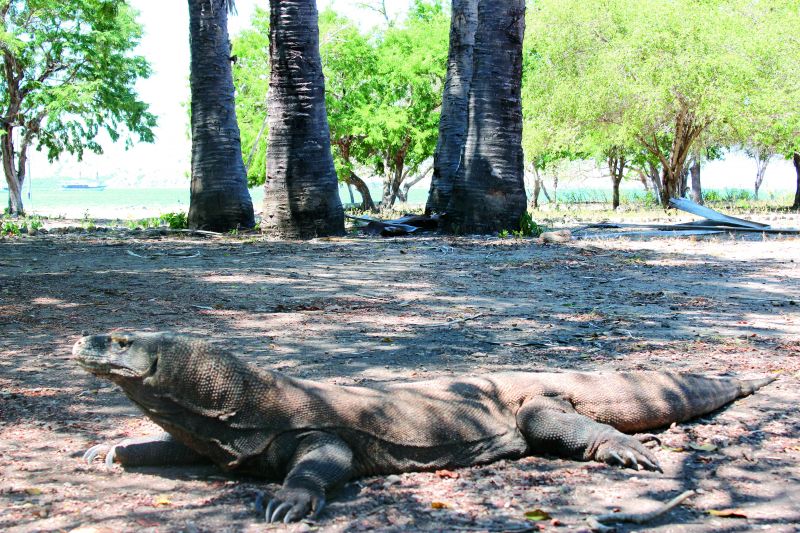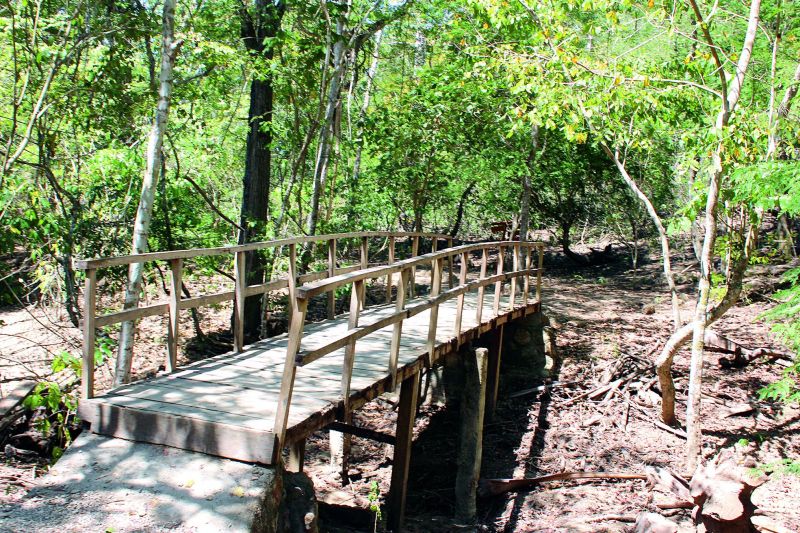Enter the dragon
A trip on the trail of the Komodo dragon takes us deep into a stunning Indonesian island.

The sea shimmered all around, a galaxy on earth. Somebody had sighted a dolphin and screamed at the pirouette and everyone waited with bated breath, fingers fire-ready at the shutter. The boat coasted in the middle of nowhere, silenced as if against its will. Tiny islands with towering clean-shaven, green-tinted knolls dotted the horizon.
We docked at a long pier made like a suburban street with striped kerb and solar powered street lamps. Inevitably, the chatter shifted to Komodo — after all we were now right in its backyard. A middle-aged Indian blogger spoke about the ‘third eye’ of the Komodo, ‘something like our Shiva’ she said. The ‘third eye’, I found later is correctly and boringly called the parietal or pineal eye, is not easily visible as it is camouflaged by the scales and is a photosensitive organ that distinguishes light and dark. This apparently was a survival mechanism for the maybe prelapsarian ‘bottom dwelling’ species to detect threats from the air. The Komodo dragon itself is believed to belong to a family of relict lizards from four million years ago. Its huge body size — 10 feet long and up to 130 kg once fully grown — has remained stable only on a handful of islands in Indonesia, mostly in the namesake one in Flores we were on now.
Hello Komodo
The shared stories and warnings warranted probably a more dramatic entry. Instead there was one right next to the pier itself close to shore, just an overgrown gecko from above. Once the DSLRs had their fill, the banter veered to what it was doing so removed from its assigned habitat: getting a tan, taking first-hand stock of its own popularity, or trying to get across to the picturesque Pink Island nearby which it must have heard was a haven for scuba divers and skinny dippers. Tasrif, local guide and conservationist, came to the rescue.
It must have been hunting,” he said. “The Komodo uses camouflage extensively and exercises infinite patience often lying in wait for several hours while in pursuit of prey.” Tasrif turned out to be right: as we were leaving the island we saw an antelope gazing out at the sea, unmoving, from the other side of the pier where the Komodo sat. Day dreaming would be its demise. The Komodo dragon is an efficient hunter — can muster up to 20 km/h speed in short bursts.
Tasrif took us around the island largely an open grassland of low elevation — natural habitat of the Komodo dragon. Red and white signboards told us to watch out for the famous island dwellers but being afternoon most were resting indoors. We passed by ridges next to cleared open areas with dark, deep burrows: these were Komodo residences between one and three metres deep, dug by the dragons themselves using their strong claws and forelimbs. These were also ambush points for passing prey.
The highlight of the walk was the realisation how lucky the Komodo dragon was to be inhabiting such a pretty island. And then: maybe it’s still pretty because of them. We passed by several places which looked like pages out of coffee-table books.
Our lunch was served at an elevated open hall with some senescent dragons lying around quietly relishing all the attention piled on them by the tourists. Everyone, including me, wanted that one, never-seen-before photograph of the Komodo. It transpired soon enough that they would be of the Komodo trying to snap you up. You inch close for that last leaf shot and the guides come brandishing their staffs and berate you with fatal statistics: 22 attacks recorded so far including six deaths, the last one in 1974 of Swiss national Baron Rudolf. The dragon spared his sunglasses and camera though.




